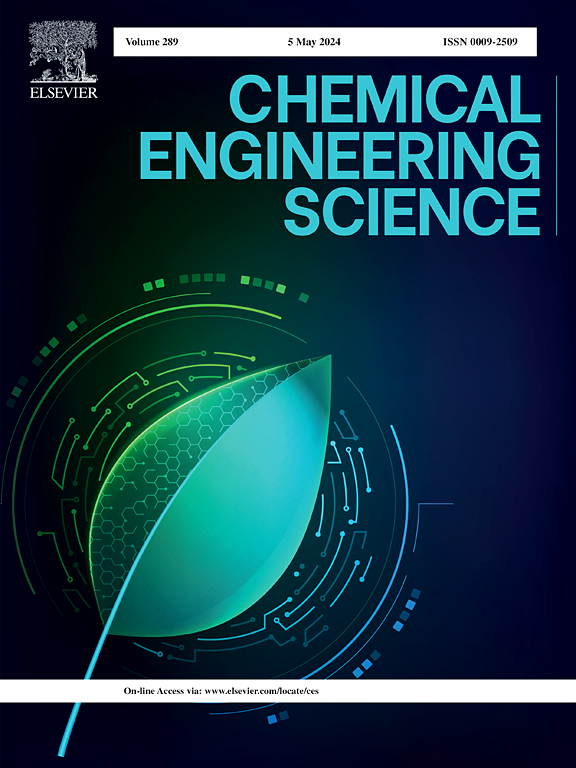使用先进的可解释的人工智能框架准确预测离子液体基三元水溶液中的水活度
IF 4.3
2区 工程技术
Q2 ENGINEERING, CHEMICAL
引用次数: 0
摘要
离子液体基水混合物中水活度的准确测定对于各种科学和工业应用至关重要。水活度是影响水性体系和溶剂稳定性、保质期和反应性的关键参数。许多机器学习研究都集中在预测这种热力学性质上,但大多数研究都集中在二元离子液体混合物上,而三元混合物的建模仍然相对缺乏探索。本研究通过成功地整合机器学习和进化算法来准确估计离子液体基三元水溶液中的水活度,从而解决了这一研究空白。具体而言,研究采用了灰狼优化、鲸鱼优化和重力搜索优化三种进化算法优化的分类梯度增强技术。利用文献中1829个实验测量值的综合数据集来开发和验证所提出的模型。其中,CatBoost-Grey Wolf优化模型表现最佳,准确率显著,R2为0.993,平均绝对百分比误差为0.13%,均方根误差为0.00265。为了保证数据集的可信度和预测框架的稳定性,采用了杠杆方法。此外,使用Shapley加性解释增强了模型的可解释性,从而更清楚地了解输入变量的影响。趋势分析进一步验证了模型捕捉关键物理关系的能力。最后,本研究强调了该模型作为优化基于离子液体的三元水体系的强大而有效的工具的实用性,显着减少了对大量实验测量的依赖。本文章由计算机程序翻译,如有差异,请以英文原文为准。
Accurate prediction of water activity in ionic liquid-based aqueous ternary solutions using advanced explainable artificial intelligence frameworks
The accurate determination of water activity in ionic liquid-based aqueous mixtures is crucial for various scientific and industrial applications. Water activity is a critical parameter that affects the stability, shelf-life, and reactivity of aqueous systems and solvents. Numerous machine learning studies have focused on predicting this thermodynamic property, but the majority have concentrated on binary mixtures of ionic liquids, while the modelling of ternary mixtures remains relatively underexplored. This study addresses this research gap by successfully integrating machine learning and evolutionary algorithms to accurately estimate water activity in ionic liquid-based ternary aqueous solutions. Specifically, the study employed Categorical gradient boosting technique optimized with three evolutionary algorithms: Grey Wolf optimization, Whale optimization, and Gravity search optimization algorithms. A comprehensive dataset of 1,829 experimentally measured values from the literature were utilized to develop and validate the proposed models. Among them, the CatBoost-Grey Wolf Optimization model exhibited the best performance, achieving remarkable accuracy with an R2 of 0.993, an Average Absolute Percentage Error of 0.13%, and a Root Mean Squared Error of 0.00265. To ensure the credibility of the dataset and the stability of the predictive framework, the leverage approach was applied. Furthermore, model interpretability was enhanced using Shapley Additive Explanations, allowing a clearer understanding of the impact of input variables. Trend analysis further verified the model’s ability to capture key physical relationships. Ultimately, this study highlights the model’s utility as a powerful and efficient tool for optimizing ionic liquid-based ternary aqueous systems, significantly reducing reliance on extensive experimental measurements.
求助全文
通过发布文献求助,成功后即可免费获取论文全文。
去求助
来源期刊

Chemical Engineering Science
工程技术-工程:化工
CiteScore
7.50
自引率
8.50%
发文量
1025
审稿时长
50 days
期刊介绍:
Chemical engineering enables the transformation of natural resources and energy into useful products for society. It draws on and applies natural sciences, mathematics and economics, and has developed fundamental engineering science that underpins the discipline.
Chemical Engineering Science (CES) has been publishing papers on the fundamentals of chemical engineering since 1951. CES is the platform where the most significant advances in the discipline have ever since been published. Chemical Engineering Science has accompanied and sustained chemical engineering through its development into the vibrant and broad scientific discipline it is today.
 求助内容:
求助内容: 应助结果提醒方式:
应助结果提醒方式:


